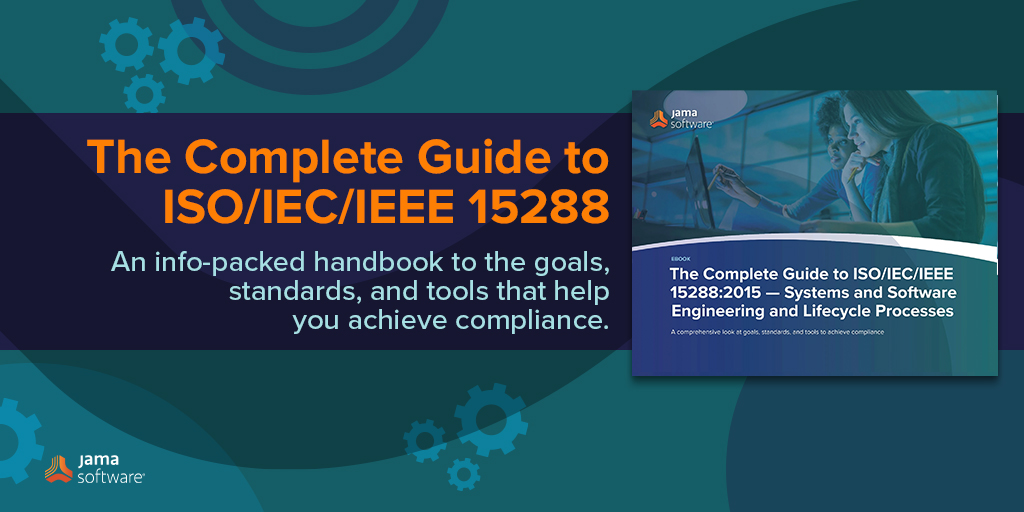
A comprehensive look at ISO/IEC/IEEE 15288 goals, standards, and tools to achieve compliance.
Product development is evolving quickly; over the past few years, it’s become increasingly complex. A study of nearly 300 design and engineering professionals found that 92% of respondents say they’re experiencing at least one form of increased complexity. Moreover, 76% say they’re experiencing at least three.
A set of standards, such as those found in ISO/IEC/IEEE 15288:2015, can help manage increased complexities using established frameworks. But if you aren’t familiar with the standards, you might have many questions such as: What is ISO/IEC/IEEE 15288:2015? What organizations use it? And how can it help with product development?
We’ve created a guide to help answer these questions so you can determine whether using this standard is right for your organization and explore other tools that can help.
RELATED: A Guide to Good Systems Engineering Best Practices: The Basics and Beyond
Why was ISO/IEC/IEEE 15288:2015 developed?
Building a new system is a large undertaking that involves a variety of moving parts and components. The success of any project, of course, relies on those parts working in synergy and solving for any potential disconnects. That’s why having a common set of practices can help. ISO/IEC/IEEE 15288:2015 was designed to create a standard reference of activities to be executed within a specific system engineering process. The standards are designed for those in systems engineering leadership, such as:
- Systems Architects
- Systems Developers
- Project Managers
- Computer Scientists
The standards are commonly used to guide internal work on systems development but can also be used as an external reference. For example, if you work with a partner, you might use ISO/IEC/IEEE 15288:2015 to help create agreements about how work is completed.
Building a New System is Growing More Complex
A recent study of almost 300 design and engineer professionals found that not only are engineering systems getting more complex, but many organizations aren’t equipped with the right tools to manage the intricacies of complex system development.
- 92% of respondents reported experiencing at least one form of increased complexity.
- 76% report dealing with three or more increased measures of complexity.
- 25% report their products are becoming more complex in five or more ways.
How is ISO/IEC/IEEE 15288:2015 used?
During product and system development, you’re working to solve a specific customer challenge. Using ISO/IEC/IEEE 15288:2015 helps you accomplish this goal by providing a framework for your processes. But how exactly are standards typically used? Here are a few examples.
- Used by an organization. An organization might use ISO/IEC/IEEE 15288:2015 to create an environment of desired processes. An infrastructure or method, procedures, technologies (and more) typically support these processes.
- Used by the project. You might decide to use what is found in ISO/IEC/IEEE 15288:2015 as internal standards to support the deployment of an existing environment or offer a new system or service. In addition, standards are used to judge the performance of a project in a specific environment.
- Supports partner agreements. Agreements are the foundation of any successful relationship, including those with suppliers or other external parties. You might partner with a supplier, for example, to select relevant processes and activities within the standards and create agreements based on those elements.
- Used to evaluate processes. ISO/IEC/IEEE 15288:2015 can serve as a process reference model to determine whether your existing processes support a specific goal around process improvements.
As you can see, you have flexibility when using standards. You can implement all frameworks or just a few of them. ISO/IEC/IEEE 15288:2015 can serve as a starting point, selecting what fits best for your project, processes or organization to guide your decisions.
To learn more about what’s included in each of the six parts of ISEO/IEC/IEEE 15288 and how Jama Software can help, download our Comprehensive Guide here.
- [Webinar Recap] Accelerate Your ECSS Standards Compliance with Jama Connect® - February 27, 2025
- The New ARP4754B and Techniques in Jama Connect® for Airborne Systems - February 13, 2025
- [Webinar Recap] The New ARP4754B: Tips for Engineers & Quality Teams - December 30, 2024
